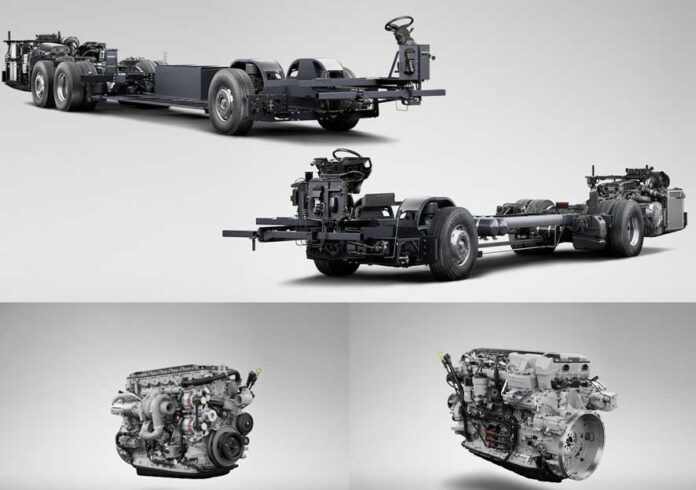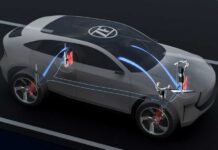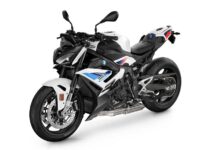
Scania has introduced a new powertrain platform for buses and coaches, built on its proven Super truck engine and available in both internal combustion (ICE) and plug-in hybrid electric (PHEV) configurations. Designed to meet diverse operational needs and evolving regulatory demands, the platform offers long-distance operators a choice between exceptional fuel efficiency and zero-emission capability.
The Scania Super combustion powertrain—already delivering award-winning fuel economy in trucks—is now the brand’s most efficient, cost-effective, and durable solution for buses. Meanwhile, the PHEV variant provides a compelling option for operators seeking to significantly cut carbon emissions and operating costs, while ensuring compliance with zero-emission zones and maintaining a premium passenger experience.
In a rapidly changing landscape shaped by sustainability goals and local emissions regulations, Scania’s dual-solution platform empowers transport operators to choose a powertrain that best suits their specific challenges and future-proof their long-distance operations.
Scania Super: 8% fuel and emission savings with extended lifespan
For a large portion of long-distance routes around the world, conventional buses and coaches remain the most suitable, or even the only, feasible choice. The Scania Super powertrain caters to those needs, representing the very latest in combustion technology.
There are several highlights here but one stands out: the exceptional fuel savings of up to 8 (eight!) percent compared with the equivalent current powertrain, which itself is already industry-leading. This greatly reduces the total cost of operation while also significantly cutting CO2 emissions.
These cost and carbon savings are enabled by a new 13-litre engine and a new version of the Scania Opticruise gearbox. The powertrain is also prepared for the Euro 7 emissions legislation. A brand-new aftertreatment system further reduces harmful emissions.
Scania’s commitment to sustainable people transport is matched by its commitment to helping customers get the most out of their operations. The new engine is designed with the aim of lasting for two million kilometres, a massive increase from its already durable predecessor.
Uptime is also boosted because all engine filters are positioned on the ‘cold’, non-turbo side of the engine which allows for better service access and faster filter replacements.
Transport sustainability is not only about CO2 emissions; it’s also about safer roads. Scania is committed to road safety and the new powertrain’s auxiliary brakes enable safer vehicle handling. Scania’s suite of driver safety systems can add to this vitally important aspect of people transport.
The plug-in hybrid: exceptional efficiency and up to 80 km electric range
The plug-in hybrid electric option (PHEV) is a versatile solution that is primarily designed to meet the demands of long-distance operations, enabling zero-emission zone compliance, drastically lowering fuel consumption and emissions, and increasing driver and passenger comfort.
With its integrated e-machine and six-speed powershift gearbox, the PHEV can run in four different modes: electric, hybrid, charge sustain and forced charging. The electric range is up to 80 kilometres on a single charge, while the electric power output is 290 kilowatts. Without compromising on total range, this makes it possible to enter zero-emission zones; even those of significant size. Depending on local requirements, the electric vehicle mode enables access to city centres – for current or future needs.
To facilitate the transition to and from electric mode, operators can choose to utilise Scania Zone geofencing technology to automate the process. So, if the vehicle is used in zero-emission areas, this can be pre-programmed into Scania Zone, meaning the vehicle can automatically switch to electric power from the still very efficient hybrid mode normally used in other types of traffic.
The different drive modes together add up to a powertrain that allows extremely efficient long-distance travelling – with fuel and emission savings of up to 40 percent in typical mixed coach traffic – and a flexibility and versatility that helps operators deal with the growing demands of coach operations while future-proofing their business.
Different solutions for different needs
“Our new combustion and plug-in hybrid powertrains are shining examples of Scania’s twin commitment to sustainability and profitability for bus and coach customers,” says Carl-Johan Lööf, Head of Product Management for People Transport Solutions at Scania.
“With these new powertrains, we will be able to provide long-distance bus and coach operators with incredibly competitive solutions, regardless of their specific needs or which particular challenges they face, meeting both their current and future business needs.”






